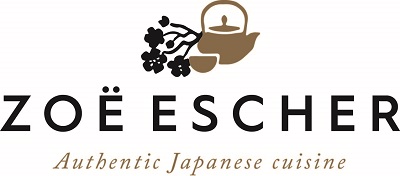Why is soy sauce served for sushi?
There is a definite reason why soy sauce is served for sushi. In Japan, soy sauce is considered a spice. It’s a way to taste the sushi pieces. It is used in much the same way as we use spices in Europe. However, there is a difference. It is not equally valid what type of soy sauce is used for sushi or other Japanese dishes. Some dishes are delicious and mild like sushi while others are stronger have a stronger flavor such as hotpot. It is important that you use a soy sauce that goes well with sushi, so that the sushi pieces do not suddenly become too salty to eat. It can ruin the dining experience. At the Sushi Course for Beginners, you will learn how to use as Japanese sushi chefs in Tokyo use. _ Zoë has lectured and held sushi courses for A. P. Moller – Maersk, Hugo Boss Nordic, Novo Nordisk, Novartis, Velux, Gorrissen Federspiel, Beierholm revision, Elbek & Vejrup and many more.
What is best to drink to sushi?
What is best to drink for sushi depends on where in the world you are. Denmark is a country where wonderful wines are enjoyed all year round. Wines that go well with heavier dishes with meat or fish and seafood dishes that is lighter. On a warm summer evening, I would suggest that you drink cold white wine that goes well with seafood. There are several different white wines and, I would recommend that you look past a wine merchant, they will be able to make the perfect match. Champagne is also a very delicious wine to drink for sushi. The fine bubbles go really well with sushi. In Denmark, bubbles are most often drunk at special events. White wine and/or champagne are good choices for sushi. In Japan, sushi restaurants most often serve cold beer for sushi. At the exclusive restaurants such as Michelin restaurants, you as a guest are offered sake. Sake is not just sake. Of course, it is important to sake wine that goes well with sushi. When it comes to sushi, the selection of drinks is huge. Read more about Sushi course for beginners _ Zoë has lectured and held sushi courses for A. P. …
Take part in a Sushi course and get healthier eating habits
Take part in a Sushi course and get healthier eating habits. In an age where health and well-being are in focus, many are looking for new ways to improve their eating habits. You can find a unique and delicious approach to a healthy lifestyle through attending a sushi course. Sushi is not only a delicious Japanese dish, but it can also be the key to promoting healthy eating habits. Sushi consists of fresh fish, seaweed, rice and vegetables, making it a nutritious and healthy dining experience. Fish is a fantastic source of healthy oils that benefit the skin and the rest of the body. Seaweed is the vegetable in the world that contains the most vitamins and minerals. Sushi courses offer not only an opportunity to learn Japanese cooking techniques, but also to explore the creativity of sushi art. By combining different ingredients, you can create healthy rolls that satisfy both the taste buds and the eyes. ON a sushi course you not only learn how to make sushi step by step, but also how to put together different tasty ingredients to achieve a healthy and tasty meal experience. Read more about Sushi course for beginners _ Zoë has held …
Sushi class for beginners
This course is made for anyone who wants to learn the art of making sushi from scratch. Regardless of whether you are a beginner or have some experience, Denmark’s most experienced Japanese trained sushi chef Zoë Escher will guide you step by step through the process of preparing delicious and authentic sushi. You learn how to boil the perfect sushi rice. You learn about the Japanese ingredients used for sushi. You learn about what you should be aware of when buying fish from the fishmonger. You learn to prepare different kinds of raw materials for sushi. You learn to make several different kinds of tasty sushi rolls. Please read more about the cooking class Sushi for beginners _ Zoë has held sushi courses and cooking classes for A. P. Moller – Maersk, Hugo Boss Nordic, Novo Nordisk, Novartis, Velux, Gorrissen Federspiel, Beierholm revision, Elbek & Vejrup and many more. Gem Gem Gem Gem Gem
How many different types of sushi rice are there in Denmark?
There are several types of sushi rice in Europe not as many as in Japan. In Japan, there are as many types of sushi rice as cheese in a European supermarket. In Denmark you will find different types of sushi rice if you visit a large Asian supermarket. A European supermarket and small Asian shops often have one of a kind. It’s really good too. There is a difference in the quality of sushi rice. Of course, it also affects the whole gastronomic experience. In the large Asian supermarket you will find several sushi rice some are produced in the US, Europe and Japan. In US, there are many Japanese-owned companies in the food industry. They produce raw materials including sushi rice for the Japanese market sushi which is of the same quality as the rice grown in Japan. In Europe, Japanese sushi rice is grown. They are grown by European companies that have learned the cultivation methods in Japan. In this way, the rice avoids the long transport time from Japan to Europe. In the Sushi course for beginners, you will learn which sushi rice is best suited for beginner’s sushi rice which ensures that you made sushi of …
